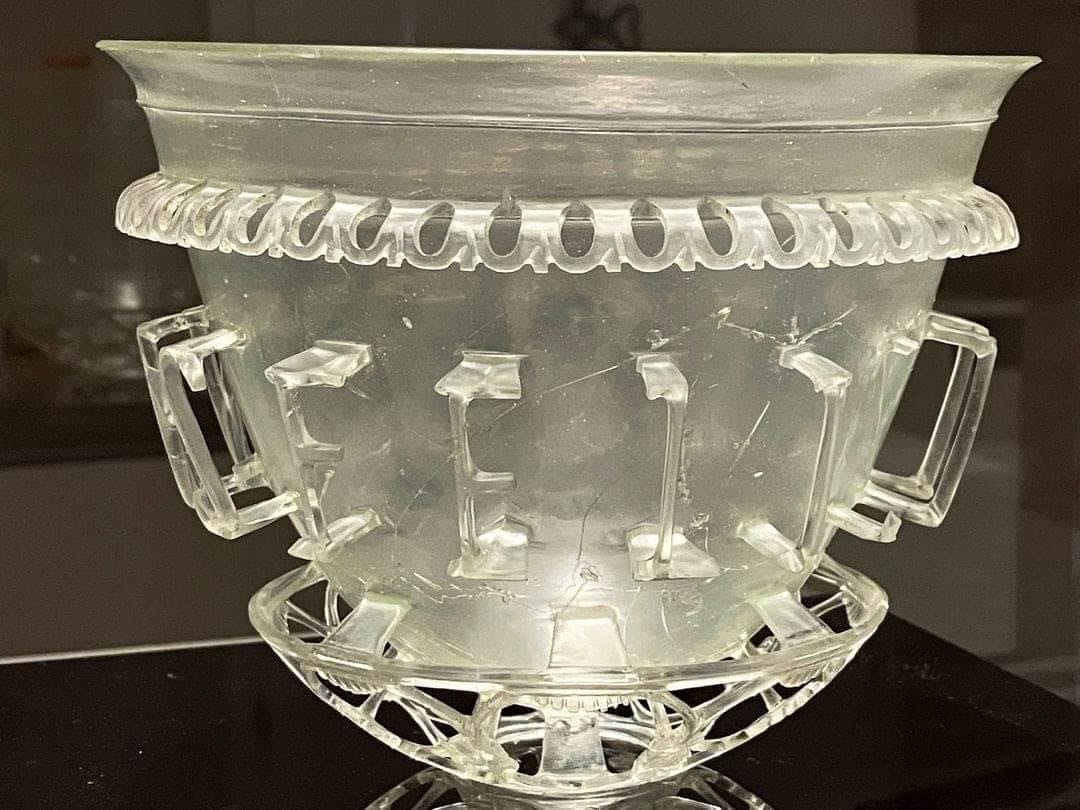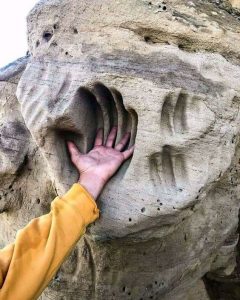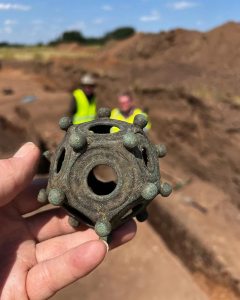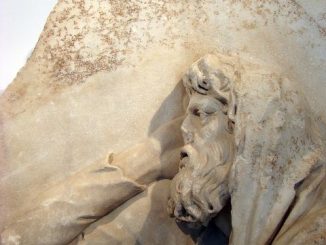Roman Diatretic Glass Vase (4th Century AD), from Autun, France. The exceptionally rare diatretic glass vase was discovered in a paleo-Christian necropolis in Autun, central France. The fragments of the vase were inside a massive sandstone sarcophagus, one of six found in the necropolis, at the feet of the deceased individual. The necropolis was in use between the early 3rd and the middle of the 5th Century AD, and the glass vase dates to the 4th Century AD. It is made of a reticulated glassware, an elaborate ornamental style featuring interlacing lines of glass in relief. Just 4.7 inches high and 6.3 inches in diameter, the vase is one of only 10 complete examples of Roman reticulated glass known to survive.









